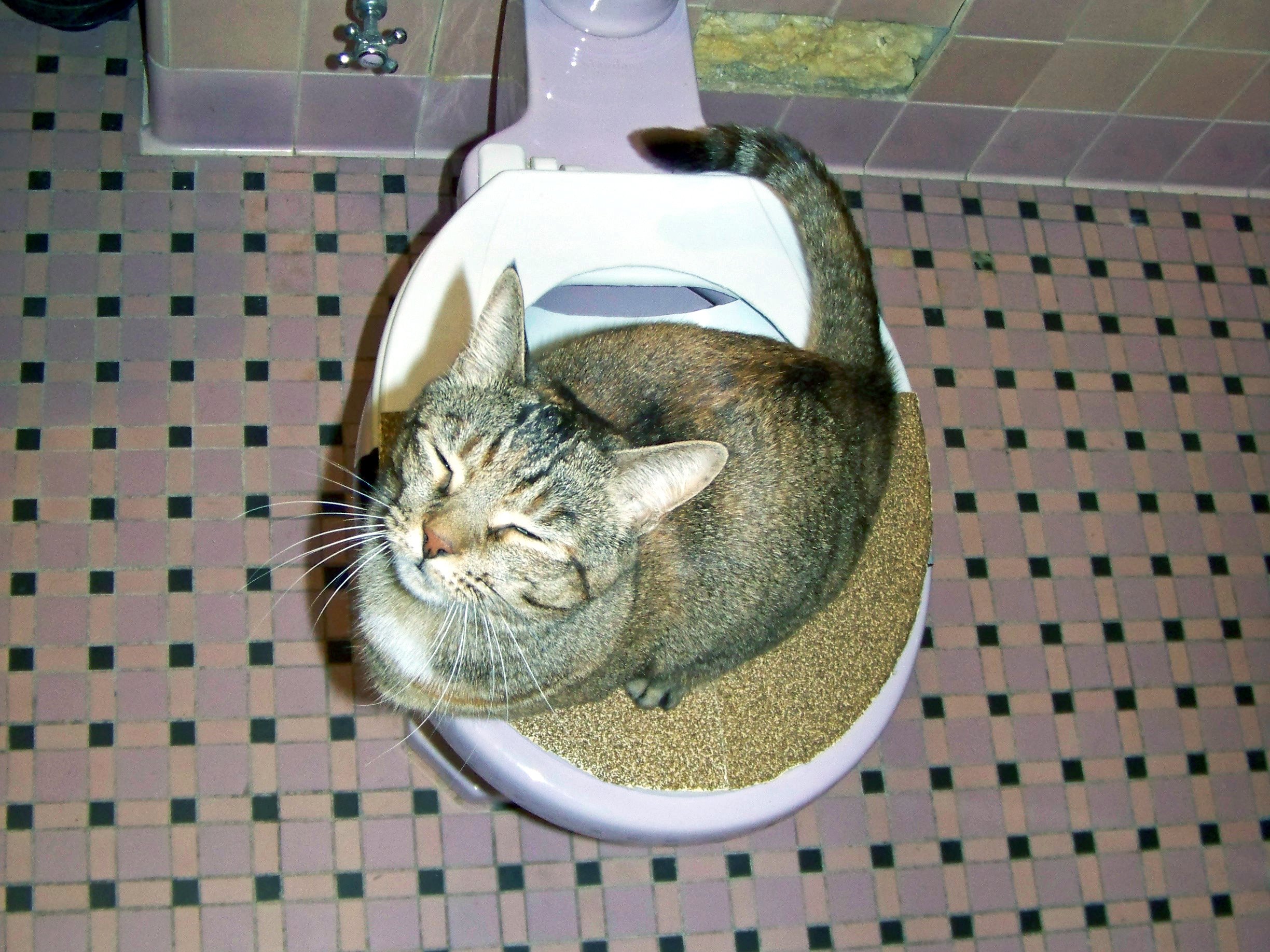What're your thoughts with regards to Should you flush animal waste down the toilet?

When it involves disposing of waste, specifically animal waste, many people often turn to the convenient choice of flushing it down the commode. Nevertheless, this apparently easy solution can have severe effects for the environment and public health. In this article, we'll discover why flushing pet waste down the toilet is a negative concept and give alternate methods for correct disposal.
Introduction
Appropriate waste disposal is important for keeping ecological sustainability and public health. While it may seem safe to flush animal waste down the bathroom, it can lead to numerous problems, both for the setting and human well-being.
Threats of flushing pet waste
Environmental effect
Flushing pet waste introduces damaging microorganisms and pathogens into waterways, which can negatively affect water ecosystems. These pathogens can infect water sources and injury aquatic life, interfering with fragile communities.
Public health worries
Pet waste includes dangerous germs such as E. coli and Salmonella, which can pose significant health and wellness threats to human beings. Purging pet waste down the commode can contaminate water materials, causing the spread of diseases and infections.
Alternatives to flushing
Rather than flushing pet waste down the bathroom, there are several alternate disposal techniques that are a lot more eco-friendly and sanitary.
Composting
Composting animal waste is a green method to take care of it. By composting, raw material is broken down right into nutrient-rich soil, which can be used to feed yards and plants.
Garbage dump disposal
Dealing with animal waste in a land fill is another option. While not as eco-friendly as composting, it is a much safer alternative to flushing, as it protects against the contamination of water sources.
Pet dog waste disposal systems
There are specific pet dog waste disposal systems available that safely and hygienically dispose of pet waste. These systems often utilize enzymes to break down waste and remove smells.
Steps to correct pet garbage disposal
To ensure appropriate disposal of pet waste, adhere to these actions:
Scooping and bagging waste
On a regular basis scoop and bag pet waste making use of biodegradable bags. This avoids waste from infecting the setting.
Making use of marked waste containers
Dispose of bagged pet waste in assigned website waste bins, such as compost bins or landfill bins. Prevent flushing it down the toilet whatsoever costs.
Cleansing can and animal areas regularly
Consistently tidy litter boxes and pet dog locations to avoid the build-up of waste and germs. Use pet-safe cleansing products to keep hygiene.
Advantages of proper disposal techniques
Taking on appropriate disposal techniques for animal waste provides a number of advantages:
Minimized environmental pollution
Proper disposal approaches decrease the danger of environmental pollution, protecting waterways and ecosystems from contamination
Decreased risk of water contamination.
By preventing flushing pet waste down the commode, the risk of water contamination is substantially lowered, protecting public health.
Enhanced cleanliness and hygiene
Appropriate disposal techniques promote much better cleanliness and hygiene, creating a safer environment for both people and animals.
Final thought
In conclusion, flushing pet waste down the bathroom is dangerous to the atmosphere and public health. By adopting alternative disposal methods and complying with proper waste management techniques, we can lessen the unfavorable effect of animal waste and add to a cleaner, healthier earth.
Why You Should Never Flush Cat Poop Down the Toilet
A rose by any other name might smell as sweet, but not all poop is created equal. Toilets, and our sewage systems, are designed for human excrement, not animal waste. It might seem like it couldn’t hurt to toss cat feces into the loo, but it’s not a good idea to flush cat poop in the toilet.
First and foremost, assuming your cat uses a litter box, any waste is going to have litter on it. And even the smallest amount of litter can wreak havoc on plumbing.
Over time, small amounts build up, filling up your septic system. Most litter sold today is clumping; it is made from a type of clay that hardens when it gets wet. Ever tried to scrape old clumps from the bottom of a litter box? You know just how cement-hard it can get!
Now imagine just a small clump of that stuck in your pipes. A simple de-clogger like Drano isn’t going to cut it. And that means it’s going to cost you big time to fix it.
For an amusing, graphic tale of what happens when you flush too much litter down the toilet all at once, take a few minutes to read Gene Weingarten’s 2017 Washington Post column “So that’s what happens when you flush cat litter down the toilet.”
Parasitic Contamination
Believe it or not, your healthy kitty may be harboring a nasty parasite. Only cats excrete Toxoplasma in their feces. Yet it rarely causes serious health issues in the cats that are infected. Most people will be fine too if infected. Only pregnant women and people with compromised immune systems are at risk. (If you’ve ever heard how women who are expecting are excused from litter cleaning duty, Toxoplasma is why.)
But other animals may have a problem if infected with the parasite. And human water treatment systems aren’t designed to handle it. As a result, the systems don’t remove the parasite before discharging wastewater into local waterways. Fish, shellfish, and other marine life — otters in particular — are susceptible to toxoplasma. If exposed, most will end up with brain damage and many will die.
Depending on the species of fish, they may end up on someone’s fish hook and, ultimately on someone’s dinner plate. If that someone has a chronic illness, they’re at risk.
Skip the Toilet Training
We know there are folks out there who like to toilet train their cats. And we give them props, it takes a lot of work. But thanks to the toxoplasma, it’s not a good idea.
Leave the toilet to the humans, and accept your future litter cleaning duty.

Consistently tidy litter boxes and pet dog locations to avoid the build-up of waste and germs. Use pet-safe cleansing products to keep hygiene.
Advantages of proper disposal techniques
Taking on appropriate disposal techniques for animal waste provides a number of advantages:
Minimized environmental pollution
Proper disposal approaches decrease the danger of environmental pollution, protecting waterways and ecosystems from contamination
Decreased risk of water contamination.
By preventing flushing pet waste down the commode, the risk of water contamination is substantially lowered, protecting public health.
Enhanced cleanliness and hygiene
Appropriate disposal techniques promote much better cleanliness and hygiene, creating a safer environment for both people and animals.
Final thought
In conclusion, flushing pet waste down the bathroom is dangerous to the atmosphere and public health. By adopting alternative disposal methods and complying with proper waste management techniques, we can lessen the unfavorable effect of animal waste and add to a cleaner, healthier earth.
Why You Should Never Flush Cat Poop Down the Toilet
A rose by any other name might smell as sweet, but not all poop is created equal. Toilets, and our sewage systems, are designed for human excrement, not animal waste. It might seem like it couldn’t hurt to toss cat feces into the loo, but it’s not a good idea to flush cat poop in the toilet.
First and foremost, assuming your cat uses a litter box, any waste is going to have litter on it. And even the smallest amount of litter can wreak havoc on plumbing.
Over time, small amounts build up, filling up your septic system. Most litter sold today is clumping; it is made from a type of clay that hardens when it gets wet. Ever tried to scrape old clumps from the bottom of a litter box? You know just how cement-hard it can get!
Now imagine just a small clump of that stuck in your pipes. A simple de-clogger like Drano isn’t going to cut it. And that means it’s going to cost you big time to fix it.
For an amusing, graphic tale of what happens when you flush too much litter down the toilet all at once, take a few minutes to read Gene Weingarten’s 2017 Washington Post column “So that’s what happens when you flush cat litter down the toilet.”
Parasitic Contamination
Believe it or not, your healthy kitty may be harboring a nasty parasite. Only cats excrete Toxoplasma in their feces. Yet it rarely causes serious health issues in the cats that are infected. Most people will be fine too if infected. Only pregnant women and people with compromised immune systems are at risk. (If you’ve ever heard how women who are expecting are excused from litter cleaning duty, Toxoplasma is why.)
But other animals may have a problem if infected with the parasite. And human water treatment systems aren’t designed to handle it. As a result, the systems don’t remove the parasite before discharging wastewater into local waterways. Fish, shellfish, and other marine life — otters in particular — are susceptible to toxoplasma. If exposed, most will end up with brain damage and many will die.
Depending on the species of fish, they may end up on someone’s fish hook and, ultimately on someone’s dinner plate. If that someone has a chronic illness, they’re at risk.
Skip the Toilet Training
We know there are folks out there who like to toilet train their cats. And we give them props, it takes a lot of work. But thanks to the toxoplasma, it’s not a good idea.
Leave the toilet to the humans, and accept your future litter cleaning duty.

Do you enjoy reading about Don't Flush Your Pets Poo Down The Loo, Vet Warns? Make feedback down below. We'd be glad to see your ideas about this blog post. Hoping that you visit us again in the near future. Appreciated our piece of writing? Please quickly share it. Help somebody else check it out. We thank you for your readership.
Call Today